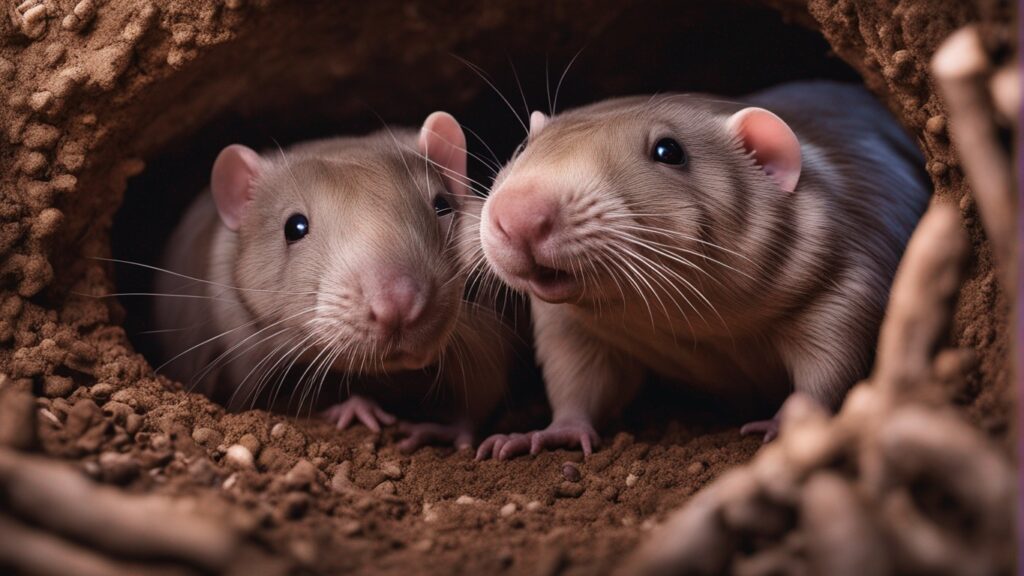
Unlocking The Longevity Secret of the Naked Mole-Rat
In a world constantly delving deeper into the mysteries of life extension and longevity, an unexpected source of inspiration has slithered into the metaphorical spotlight: the naked mole-rat. Despite its unappealing name and appearance, this small rodent is a wonder of nature, boasting an impressive lifespan. Its secret weapon? A molecule known as high molecular weight hyaluronic acid (HMW-HA). Enriching its life quality, the naked mole-rat leverages hyaluronic acid to fend off cancer and delay aging. Recent research has sought to translate the rodent’s natural advantage into potential life-extending mechanisms for other species, using transgenic mice as the test subject.
The Power of High Molecular Weight Hyaluronic Acid
Hyaluronic acid is much more than an ingredient in beauty products—it’s a key player in the longevity game. In fact, the naked mole-rat—exhibiting elevated levels of this specific molecule—has extended healthspan and resistance to cancer, hinting at a potential link between HMW-HA and lifespan extension.
The connection becomes even apparent when examining hyaluronic acid’s function within the body. It is a glycosaminoglycan, responsible for providing structure and hydration to tissues. In terms of longevity, however, its most crucial role lies in its potential to regulate inflammation—a significant factor in the aging process.
Applying Nature’s Longevity Success to Other Species
A transgenic experiment on mice using the naked mole-rat’s hyaluronic acid synthase 2 gene (nmrHAS2) revealed fascinating outcomes. The recipient mice demonstrated heightened levels of hyaluronic acid in various tissues. Moreover, they exhibited both reduced spontaneous and induced cancer occurrence. These circumstances mimic the naked mole-rat’s unique health status, providing intriguing possibilities for lifespan extension and improved healthspan in other species.
The health improvements in these nmrHAS2 mice emphasize the protective power of HMW-HA. The molecule seems to facilitate a particular shift in the transcriptome signature, aligning it more with longer-living species. One of the most dramatic changes observed was a decrease in inflammation across numerous tissues—a characteristic aligning with the naked mole-rat’s own longevity attributes.
Pathways to Longevity: The Role of Hyaluronic Acid
Through the naked mole-rat experiment, it becomes clear that HMW-HA extends lifespans not through one, but various pathways. Firstly, it exerts a direct immunoregulatory effect on immune cells, contributing to lowering inflammation within the body. As a cornerstone of the aging process, maintaining inflammation at bay can foster enhanced healthspan and potentially further lifespan.
Moreover, HMW-HA provides a shield against oxidative stress. As oxidative stress is another critical player in aging, deploying a defense mechanism against it is undoubtedly advantageous in paving the way for lifespan extension.
Furthermore, the molecule promotes the maintenance of gut barrier integrity, a crucial aspect of overall health that often declines with age. By upholding gut barrier function during aging, HMW-HA could promote a healthier and potentially lengthier life.
In essence, by harnessing the natural powers of hyaluronic acid synthesized by the naked mole-rat, the experiment provides an innovative way of extending healthspan and opening new avenues in longevity research.
Key Insights:
- The naked mole-rat’s longevity may be attribute to high levels of hyaluronic acid (HMW-HA).
- Transgenic mice expressing the naked mole-rat’s HMW-HA synthase gene (nmrHAS2) showed increased levels of hyaluronic acid, reduced cancer rates, prolonged lifespan, and improved healthspan.
- HMW-HA assists in extending lifespan by reducing inflammation, protecting against oxidative stress, and maintaining gut barrier integrity during aging.
- The findings suggest HMW-HA can potentially be leveraged to lengthen lifespan and enhance healthspan in other species.
Source Article: http://www.ncbi.nlm.nih.gov/geo/query/acc.cgi?acc=GSE234563



